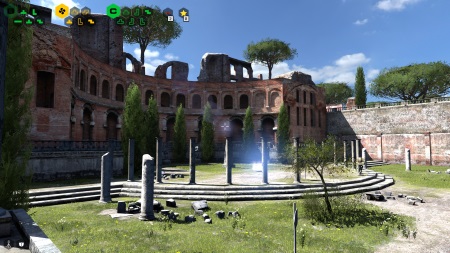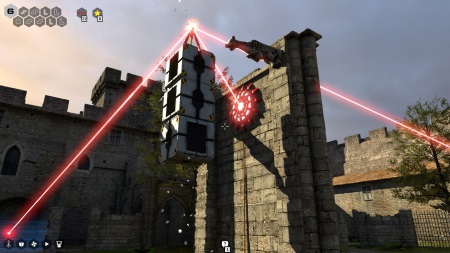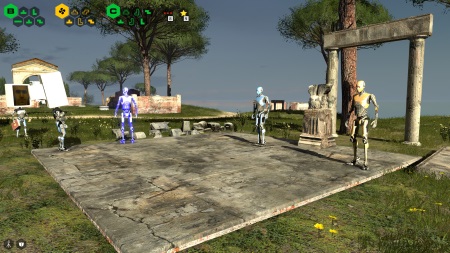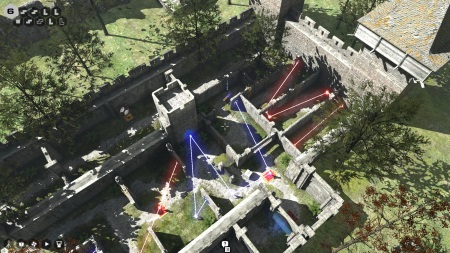Even my wife, non-gamer that she is, knows enough to remark, “Hey, this looks a lot like Portal!” It’s a puzzle game that takes obvious design cues from Portal and even overtly references it in a number of ways. There’s no portal gun in here and Elohim is no GLaDOS but this turned out to very worthy successor to what is one of the most famous puzzle games ever made, a state of affair that I still have some trouble wrapping my head around given that this was made by the same studio responsible for the thoroughly silly Serious Sam series.
Instead of having something as unique as portals as the basis of all of its puzzles, The Talos Principle uses a variety of elements, most of which aren’t particularly unique. There’s the lowly cube to activate switches or to help you reach higher places; connectors which are used to connect energy beams; jammers which are used to deactivate objects in the environment; fans which can blow both you and objects and the simple but potentially difficult to use platforms which allows you carry objects above your head. The most original of the tools is a device that allows you to record and then replay your actions. Essentially this creates a ghost-like past version of you so that you can cooperate with yourself to solve otherwise impossible puzzles.
The base game includes well over a hundred puzzles, spread across three hub-worlds. The difficulty of each varies widely of course but they’re color-coded for your convenience and interestingly you don’t have to solve all of them to reach the most common ending and you can play them in almost any order. Even at their hardest, it’s nothing quite as taxing as the puzzles in, say, Braid but they do manage to provide a level of challenge that makes them quite fun and satisfying to work through. Only collecting stars can be sometimes impossible to do without a walkthrough as many of them rely on hiding things in obscure parts of the level.
So far, so good but the really surprising thing for me was that this game does the fluffy stuff really well too. The story is impressive stuff, with the player being a robot that has awakened in a world in which it has been set to a series of trials by its creator Elohim. Through computer terminals and most of all the fantastic audio diaries, you learn about the end of the world and what the Talos Principle represents. To someone well-versed in science-fiction, it’s pretty easy to guess what is really going on, but the story works well all the same, with well-written snippets of text and philosophical musings about the nature of a person that is respectably sophisticated.
I really how loved the theme of each of the three worlds has a specific and well-chosen aesthetic theme. One complaint I had about The Vanishing of Ethan Carter was how inert the world felt despite its beauty. This isn’t the case as there are all sorts of little Easter Eggs and snippets of dialogue from Elohim that reward exploration and flesh out the world. Then there’s stuff like the QR codes representing messages from other beings trying to solve the puzzles, the neat in-game hint system, the Sigil puzzles and the bonus worlds. It adds to an impressively substantial puzzle game that is also perfectly executed.
I do miss the visceral terror of flying through portals at frightening speeds and the humorous personalities of Portal. This feels like a much more intellectual, perhaps even more serious game. I also dislike how some of the puzzles here can be difficult merely because carrying out the precise sequence of actions can be troublesome even if you know exactly what to do. But The Talos Principle makes up for it plenty of good stuff including a true ending that I found absolutely fantastic, making it a more than worthy successor. If you loved Portal, you absolutely must play this game.




2 thoughts on “The Talos Principle”